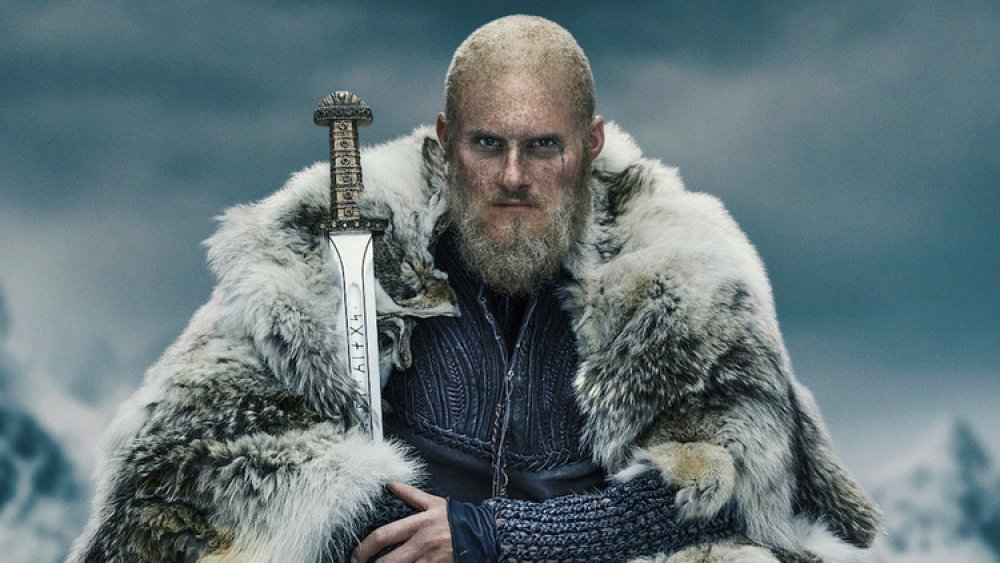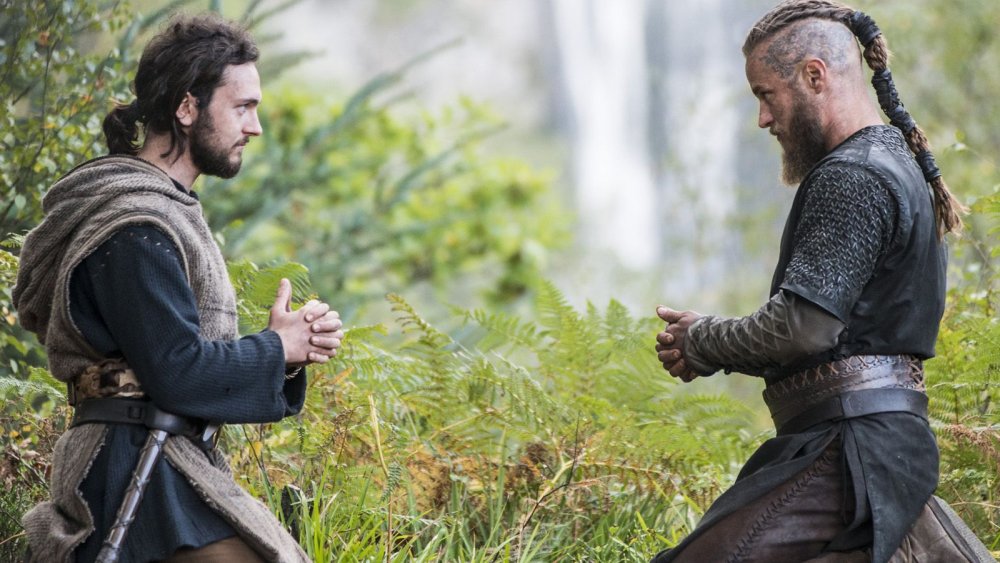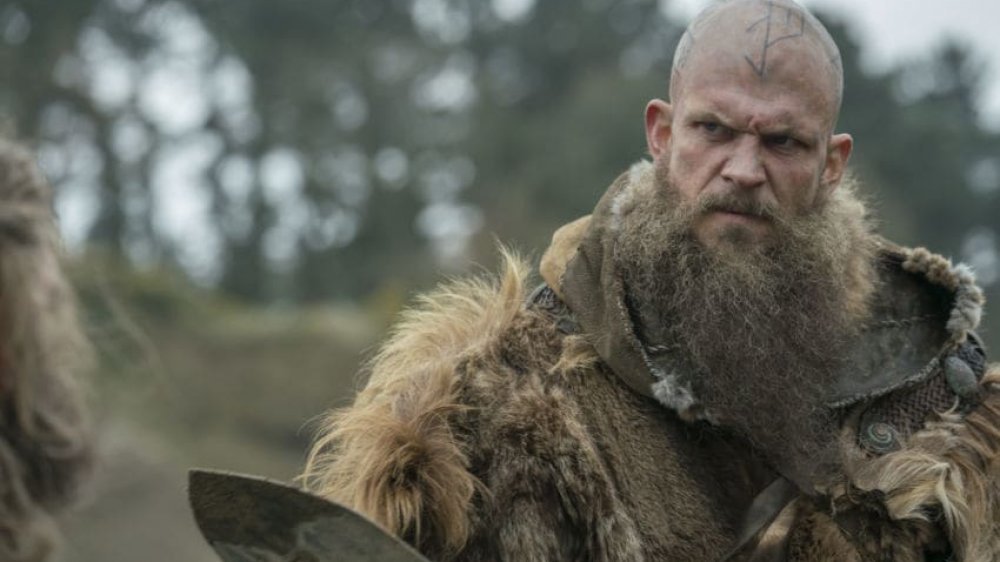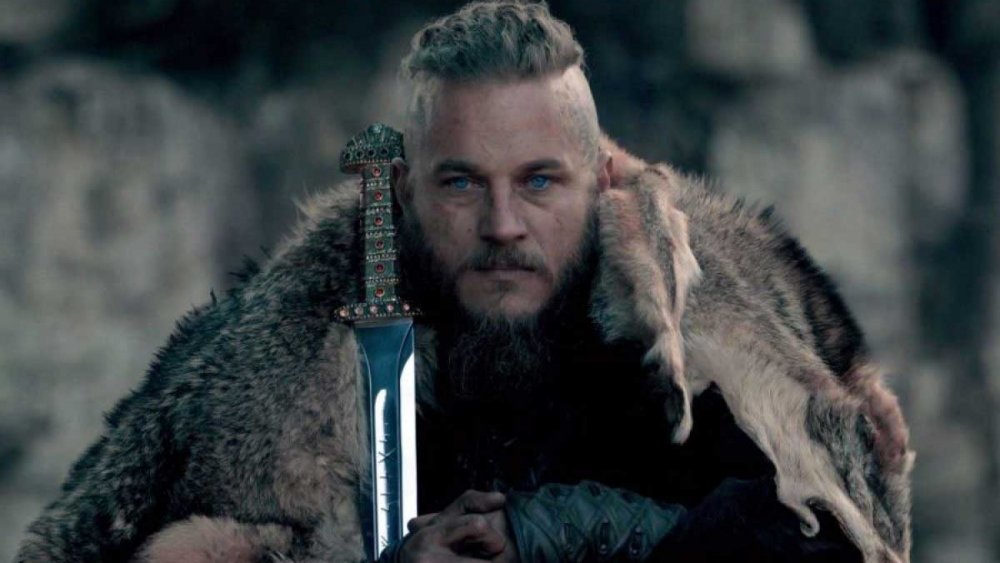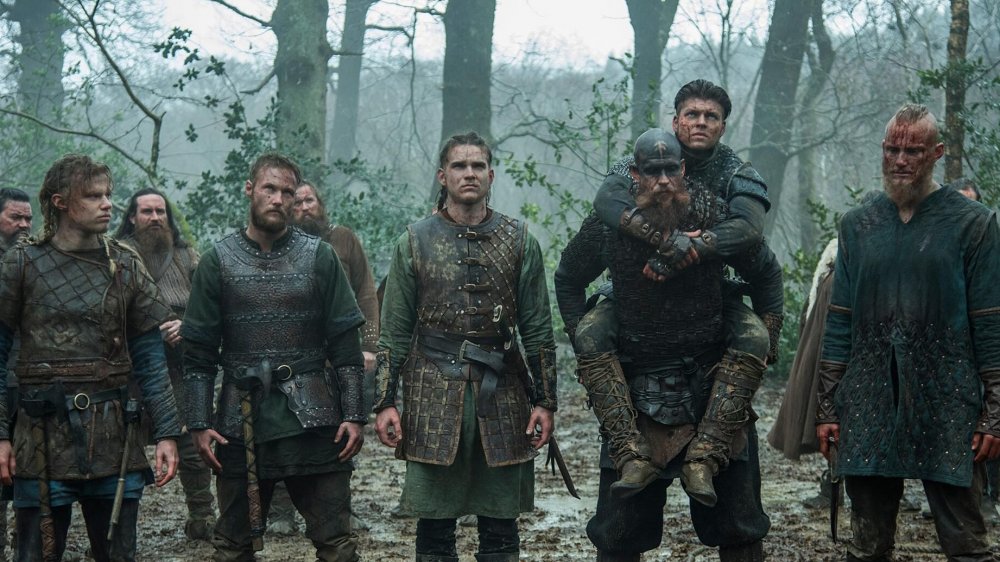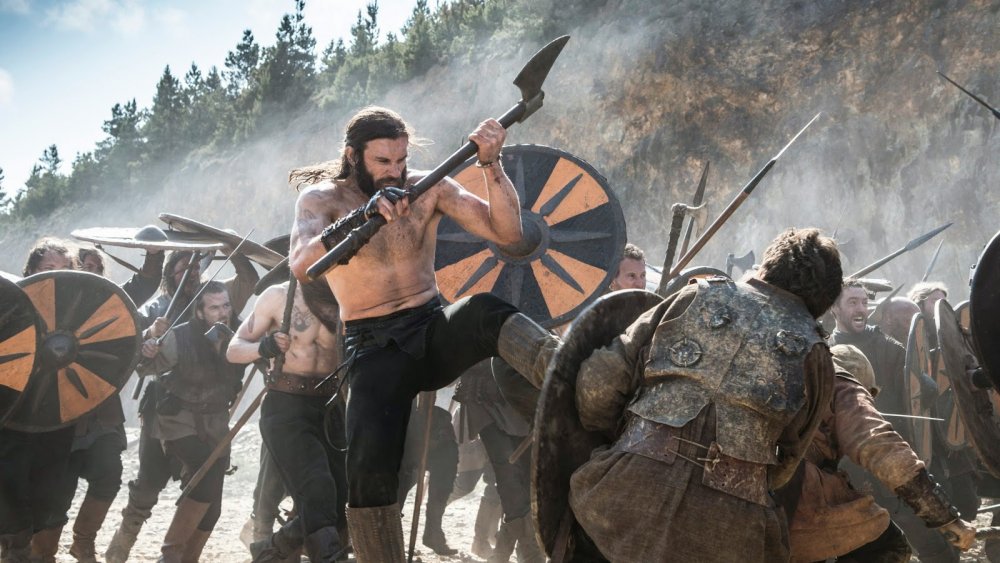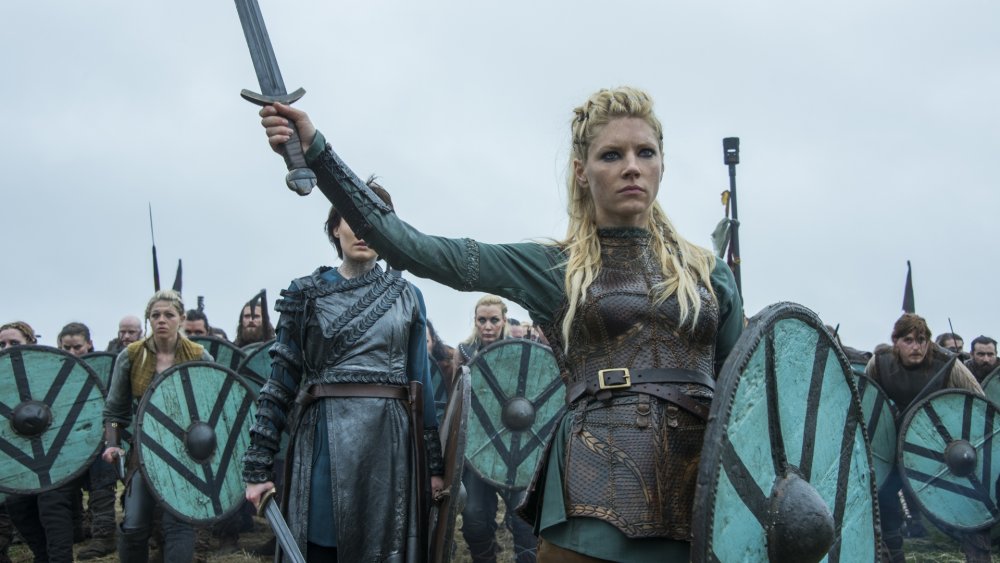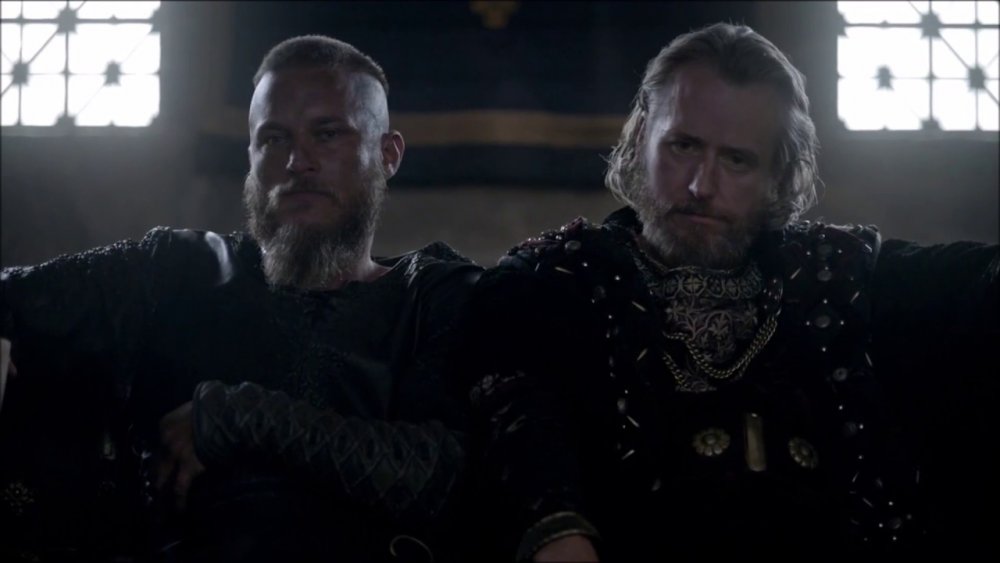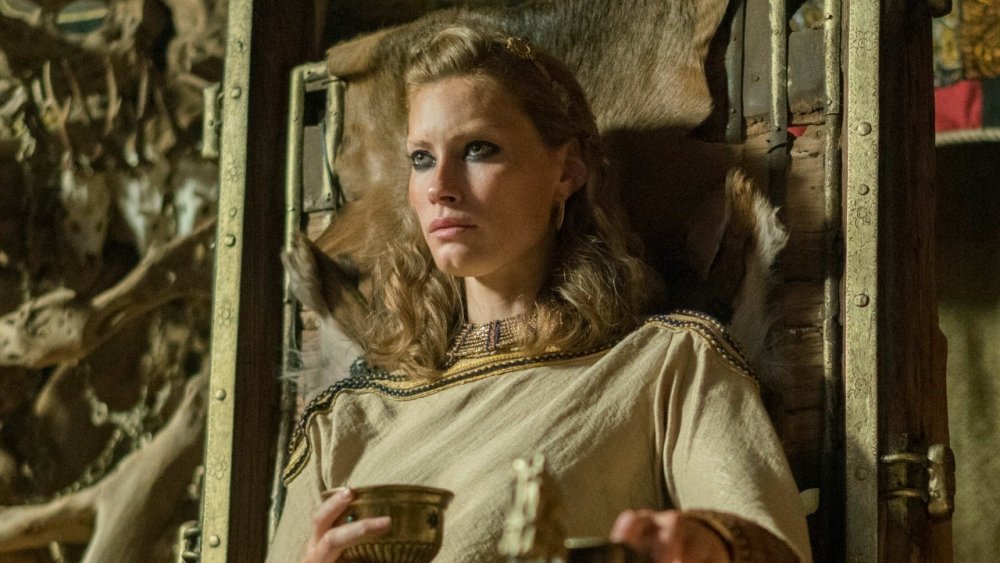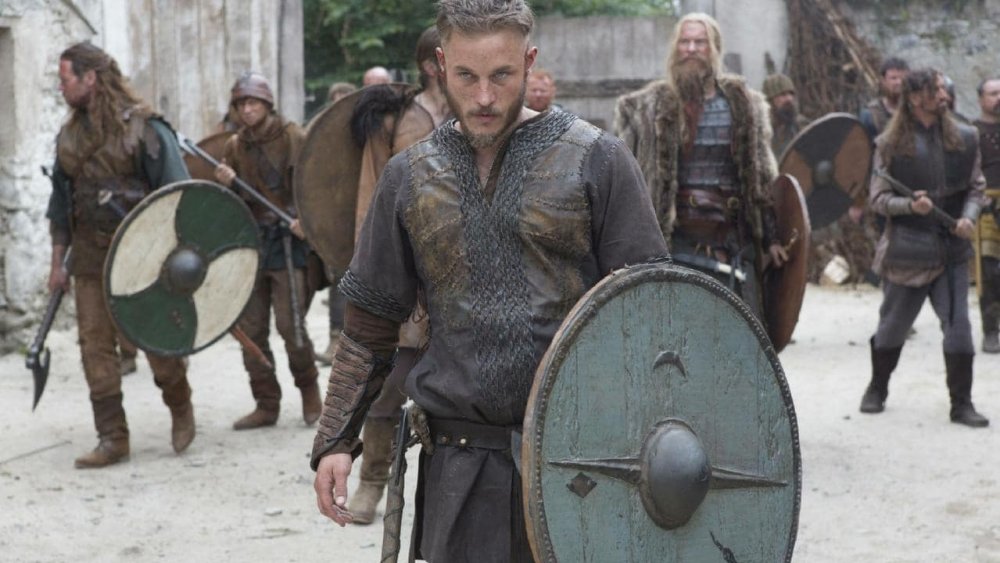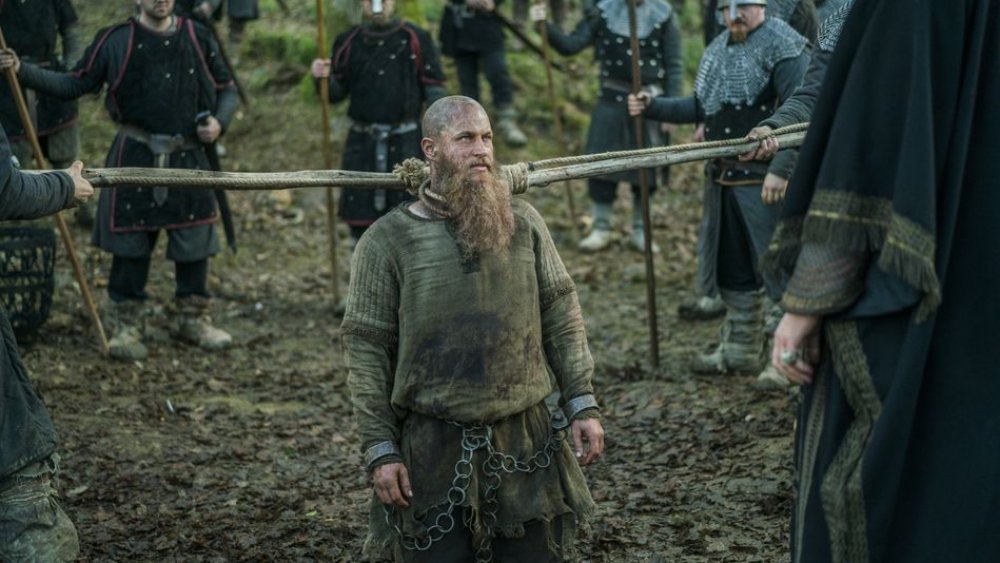5 Best And 5 Worst Things In Vikings
When it comes to History's Vikings, fans likely have a lot of emotions regarding the epic, violent series, both positive and negative. After all, the characters on Vikings have gone through quite a bit throughout the show's six-season run, which has spanned several decades within the world of the show. Main characters have been born and have died, kings and queens have risen and fallen, and the show has had its fair share of storylines that have been both thrilling and infuriating.
With all that's happened since Vikings' began, it can be difficult to even remember what the show was like back in its first season, when Ragnar and Lagertha were still married, Bjorn was still a child, Ragnar was just a farmer, and the supporting cast was almost entirely different from what it looks like today. In other words, since its early episodes, Vikings has gone through a lot of ups and downs, yet it still has many of the same strengths and weaknesses at the end as it did in the very beginning. Below, we take a look at some of the best and worst things in History's Vikings.
Spoilers for Vikings ahead.
Best: Ragnar and Athelstan's relationship on Vikings
One of the most intriguing choices Vikings made in its first season was in the introduction of Athelstan (George Blagden), a Christian monk who's taken captive after Ragnar Lothbrok (Travis Fimmel) pillages a monastery. Intrigued by Athelstan's ability to converse in the Vikings' native language, Ragnar decides to keep him as a slave so that he can learn more about the priest and his strange Christian ways. Gradually, over time, the relationship between Ragnar and Athelstan evolves from mutual curiosity into a strong and respectful friendship, and Athelstan winds up choosing to remain with Ragnar even after the Viking restores his freedom.
The addition of Athelstan to the cast not only resulted in one of Vikings' strongest bonds, but it also was a clever way to give audiences important information about Viking culture without feeling too heavy handed. Coming from a sheltered, Christian background, Athelstan was constantly full of questions about the Vikings' way of life, which enabled Ragnar to educate both him and the audience on his unique worldview. But more than a clever conduit for worldbuilding, Ragnar and Athelstan's friendship was one of the most interesting and genuine relationships on the show. Despite their vastly different backgrounds and belief systems, the two men were able to connect both intellectually and emotionally thanks to their willingness to listen and learn from one another.
Ultimately, when Athelstan died, Ragnar delivered one of the most powerful moments on the series as he hauled the body of his dead friend to the top of a mountain and did his best to honor him with a Christian burial, even though it went against Ragnar's personal beliefs. As he prepared the makeshift cross that would mark Athelstan's grave, Ragnar gave a heartbreaking monologue, telling Athelstan how much he would miss him. It was one of the most devastating moments on the show but also one of the most beautiful, and it helped convey just how important their friendship had been.
Worst: The fall of Floki
Although Vikings is full of fascinating characters, none started off more interesting than Floki (Gustaf Skarsgård), the devout shipbuilder who also served as a close advisor and friend to Ragnar. As intelligent as he was eccentric, Floki served as a counterpoint to Athelstan for the first few seasons of Vikings, cautioning Ragnar against his embracing of the priest, as Floki feared Athelstan's influence would pull Ragnar out of favor with the Viking gods. The tension between Ragnar's two closest friends served as a consistent point of tension on the show, while Floki's strong convictions and quirky nature made him a brilliant character in his own right. One of Floki's best moments came at the end of the show's second season, when the audience had been led to believe that the boat builder might've betrayed Ragnar, only to discover that Floki's loyalty never faltered, and his seeming wavering was all a ruse meant to give Ragnar the upper hand.
That only made it that much more disappointing when Floki's character took a sharp nosedive, beginning with his murder of Athelstan in the show's third season. Not only was the act prompted by a vision that Floki attributed to the gods, meaning it lacked any sort of proper buildup, but it also poisoned his relationship with Ragnar going forward. By the time of Vikings' sixth season, Floki was off on his own leading a settlement in Iceland, populated by recently introduced and unmemorable characters in a relatively dull C-plot that only served to distract from the show's central narrative.
Best: The saga of Ragnar Lothbrok
Ragnar wasn't always the most likable main character, but he sure knew how to captivate an audience, and when he was leading the cast of Vikings, it felt impossible to look away. Based on a legendary Viking hero who may or may not have actually existed, Ragnar began the series as a farmer in the village of Kattegat, married to the shieldmaiden Lagertha (Katheryn Winnick), who was also the mother of his two children. Yet as the series went on, Ragnar's quick, eager mind and hunger for power refused to allow him to remain settled where he was, and he quickly climbed the ladder to become king of Kattegat, and then he turned his ambitions to the rest of the world.
Even when Ragnar was acting unkind and bullheaded — which was fairly often — he remained a compelling character, and managed to keep the audience engaged, often while making some deeply unsympathetic choices, such as his decision to cheat on the immensely popular Lagertha with cold and manipulative Princess Aslaug (Alyssa Sutherland). Additionally, his relationships with other characters such as Athelstan, Floki, Lagertha, and his jealous brother Rollo (Clive Standen) helped keep Ragnar grounded and human throughout all of his larger than life endeavors. Ragnar was the type of protagonist that was hard not to love, even when he was being horrible, and his eventual death in season four left a hole that's still strongly felt two seasons later.
Worst: Continuing the legacy
Whether or not Ragnar was ever real, most accounts of his life agree on how he died, so it was inevitable that the show would eventually get to his execution at the hands of King Aelle (Ivan Kaye) in a pit of snakes. The episode chronicling Ragnar's death was one of Vikings' most compelling, as was watching the sons of Ragnar seek vengeance on Aelle for their father's death. However, Vikings has really struggled to maintain its creative footing following the death of Ragnar, especially when it comes to picking which character to follow in the absence of its former lead.
Before Ragnar died, the show leapt forward in time, allowing his young sons to grow up so that they could take over the narrative. Yet instead of shifting focus to an established character like Bjorn Ironside (Alexander Ludwig), Ragnar's eldest son and a main character on the show since the very beginning, or even Ragnar's ex-wife Lagertha, Vikings decided to zero in on the most off-putting of Ragnar's sons, the sociopathic Ivar the Boneless (Alex Høgh Andersen). Although Ivar was certainly interesting, he lacked the complex humanity that made Ragnar such an interesting character to follow through his extreme ups and downs. Additionally, Vikings decided to devote much more time to the goings-on in European kingdoms in its post-Ragnar seasons than it had previously, shifting focus even further away from fan-favorite characters who'd been around since the beginning.
Best: Vikings has some epic battles
Vikings has always been a brutal, bloody show, and many of its best scenes have happened during breathtaking battle sequences, which have come in all shapes and forms throughout the series. While there have been plenty of jaw-dropping battle sequences in which Viking armies faced off against other nations, some of the show's most pulse-pounding moments occurred when the show's central characters went head to head against one another. From the Ragnar vs. Rollo battle in season two to the civil war between the sons of Ragnar in season five, Vikings has often been at its best when both sides of its battles are filled with people we care about and are rooting for.
But even beyond the storytelling of the battles, they're also incredibly fun to watch. Although Vikings has had at least one major battle every season — and often more than that — the show has managed to make each one visually interesting, filled with exciting choreography, stunning cinematography, and driving music that keeps its audience on the edge of our seats. Vikings also has a knack for weaving in significant character moments that lend an emotional weight to the battles and help them linger in viewers' minds beyond their visual impact, such as Athelstan saying a prayer before fighting alongside the Vikings in the season two finale or Bishop Heahmund (Jonathan Rhys-Meyers) calling for Lagertha as he died on the battlefield in season five.
Worst: Vikings' treatment of women
Let's be clear. Lagertha is amazing, and she's always been one of Vikings' strongest characters. However, one complex, loving, powerful female character isn't enough to make up for the way pretty much every other woman on the show has been underwritten compared to the men. Throughout Vikings' run, while Lagertha was portrayed with consistent depth and agency, other women have largely been written without much of either, existing most often as props to further the male characters' stories.
Characters like Porunn, Torvi, and Helga are explored mostly through their husbands, with only a few meager defining characteristics of their own, while plenty of other female characters seem to exist only to be either brutalized, used as sex objects, or both. There are of course some exceptions, such as Siggy and even Aslaug, who are given more than cursory storylines, but they aren't filtered through the same sympathetic lens as the male characters, making them come off as largely unpleasant and unlikable, lacking much in the way of nuance.
Even Lagertha herself experienced a steep decline in the seasons leading up to her death, with most of her storylines revolving around her love interests, including the shieldmaiden Astrid, who's defined mostly through her various sexual encounters with Lagertha and others until she meets her brutal end. Vikings has always been a violent show with a high mortality rate, and it's not uncommon for even its most beloved characters to suffer immensely or die horribly. However, when the vast majority of its female characters seem to exist mostly to be abused, objectified, villainized, and murdered, without much opportunity to define themselves on their own terms, it's hard to ignore that Vikings could do a lot better in how it portrays women.
Best: Ragnar and Ecbert's complex rivalry
Ragnar and his fellow warriors of Kattegat have faced a lot of opponents over the course of Vikings, but no adversarial relationship has been more intriguing than the chess game of mutual respect that unfolded between Ragnar and King Ecbert of Wessex (Linus Roache) over the course of three seasons. Ecbert was introduced in season two after saving Athelstan from crucifixion, and he was immediately similar to Ragnar in his curiosity regarding the conflicted monk. Like Ragnar, he quickly came to treasure his conversations with Athelstan, and through their talks, he developed a deep fascination with Ragnar. Despite leading opposing kingdoms, the two found one another to be kindred spirits, seeing in each other similar levels of intellectual curiosity, ambition, and cunning.
Over several seasons, Ecbert and Ragnar would briefly join forces, only to inevitably wind up on opposite sides of the battlefield every time. Yet despite their ongoing conflict, the two kings managed to cultivate an unlikely yet mutually respectful friendship. Ragnar and Ecbert's talks, and their clear affection for one another despite their political hostilities toward the other's kingdom, provided some of the richest and most thought provoking scenes in the show's run.
Worst: All of Aslaug
While it's important to acknowledge that Vikings hasn't been great in how it portrays its female characters across the board, there's one character who still deserves a special shout-out for being consistently "the Worst," and that's the late Queen Aslaug. From her initial seduction of Ragnar in season one, driving Lagertha to divorce him, to her negligence in caring for children that led to the death of not one but two different characters named Siggy, Aslaug's choices and actions have wound up driving some of the show's most frustrating and infuriating turns.
And while Aslaug is far from the only character on the show known for making irritating decisions or acting in an unpleasant way — Ragnar himself did both of those things on a not-infrequent basis — Aslaug was given pretty much zero redeeming qualities to help temper her worst aspects. It pushed her past being a complex, interesting character into being almost cartoonishly villainous, to the point where it made it hard to understand why anyone on the show even tolerated her. By the time Lagertha finally assassinated the queen of Kattegat and seized her crown, it felt like a long overdue relief rather than the loss of a long-running main character.
Best: A different perspective
Vikings' point of view is decidedly unique among other epic historical (or historical-feeling) dramas, centering a culture and religion very different from the typical European and Christian-led narratives we're used to seeing on television. From the very beginning, Vikings made it absolutely clear that its sensibilities were markedly different than most other mainstream shows when the heroes attacked a monastery in the series' second episode, brutally slaughtering non-violent monks who died begging for their lives. That it was the show's protagonists committing these acts, and that none of them ever showed even a hint of remorse was far more than a clue that Vikings was going to be a different kind of show — it was a neon sign.
And yet, Vikings has done an excellent job finding ways to help its audience thoughtfully engage with its unfamiliar point of view, from its inclusion of more traditionally sympathetic characters such as Athelstan and Ecbert to the way it balances the inner lives and communities of its characters with their often shocking actions. Even as Ragnar is leading attacks on innocent villages, Vikings makes sure to also show his humanity with interactions with his family and friends. Does that make what he's doing okay? That's left to the audience to decide, but Vikings makes sure that at the very least, you have to think hard before you answer.
Worst: The gutting deaths on Vikings
The period and culture depicted on History's Vikings is brutal, and it would be unrealistic to expect favorite characters to be spared from grisly deaths, especially if the history books say otherwise. However, while many of the show's deaths are inevitable, Vikings' fondness for killing off its best characters — historically accurate or not — often winds up not only hurting the audience but the show itself.
Several times now, Vikings has struggled creatively with its major deaths. In season three, not only did the back half of the season seem to flounder following the murder of Athelstan, but the death itself felt unearned, as it relied on multiple heel turns prompted by divine visions (all within a single episode) to get to that pivotal moment. Conversely, in season four, the death of Ragnar occurred in an immensely powerful episode and felt tragically inevitable, but afterwards, the show wandered around aimlessly for far too long, having lost its focus when it killed off its main character. In other words, while the deaths are powerful moments in and of themselves, they often leave the show reeling for all the wrong reasons.
